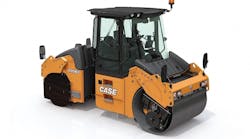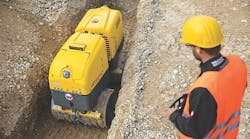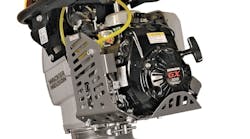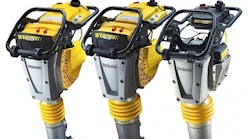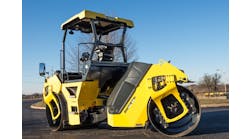Product of the Week - Case DV209CD and DV210CD combination vibratory rollers
Case Construction Equipment's two new combination vibratory rollers—the DV209CD and DV210CD—compact with the front drum and deliver a smooth finish with rear pneumatic tires. The DV209CD and DV210CD come standard with automatic vibration control, crab steering, an oscillating articulated roller joint and a pressurized triple-filtration water system. High-frequency is offered as a standard feature allowing for frequencies up to 4,020 vpm (67 Hz) for greater control of compaction performance based on the thickness and density requirements of each lift.
The DV209CD and DV210CD also feature a fully adjustable operator environment with a steering wheel instrument cluster and digital display.
The units feature operating weights of 20,753 and 22,440 pounds, respectively.
The new models feature a Tier 4 Final certified 100 HP Deutz engine that meets emissions regulations for DOT projects. Equipped with a combination of EGR, DOC and SCR after-treatment technologies, the fuel-efficient engine works in combination with an updated cooling system and automatic idle-control to reduce fuel consumption by up to 15 percent compared to previous models, according to the OEM.
Standard high centrifugal forces and dual amplitudes are designed to maximize productivity on coarse bases, hot-mix asphalt surfaces or recycled hot-mix asphalt, while the automatic vibration control minimizes surface damage and delivers a smooth finish.
An articulated roller joint oscillates + /- 6 degrees to maintain reliable drum-to-ground contact. The DV209CD and DV210CD also feature a large water tank and pressurized, triple-filtration water system designed to prevent clogs and maintains even flow to all nozzles - even while operating on grade.
An optional compaction meter and infrared thermometer monitor material stiffness and temperature in real time so the operator can achieve precise results without over-compacting. An available printer is designed so that results can be easily submitted for DOT approval and kept for record keeping.
